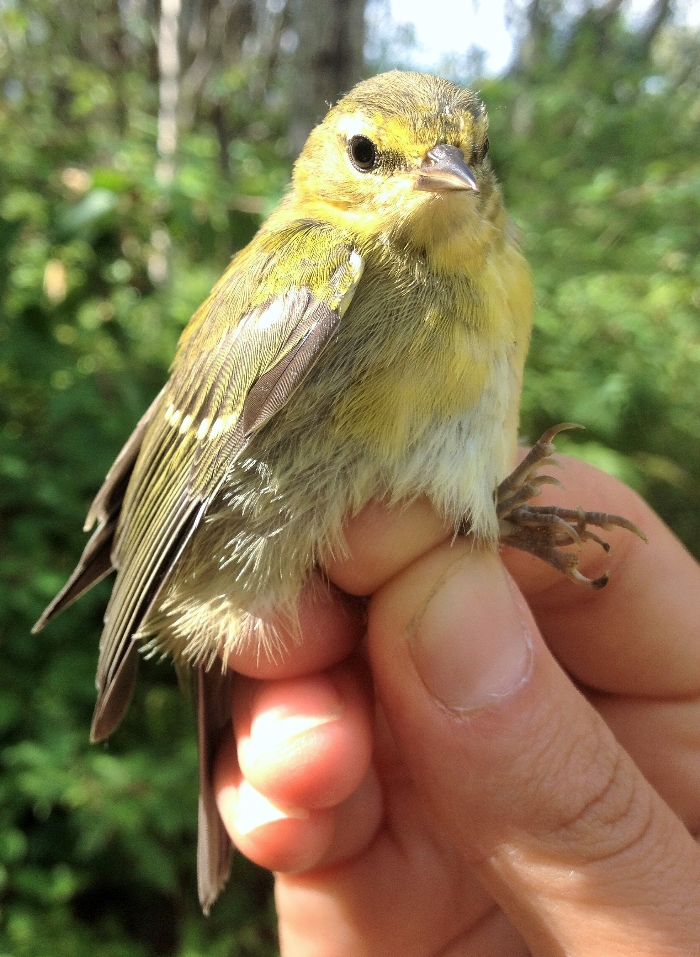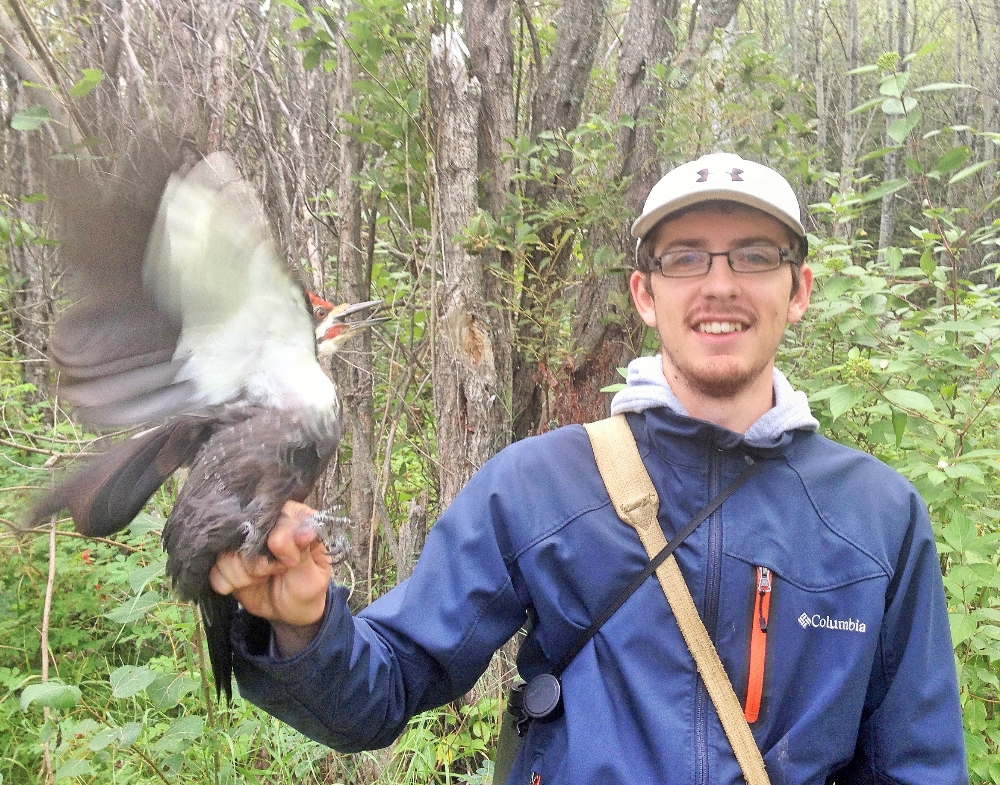It has been another fantastic week at the observatory! We had a couple days of poor weather that limited our banding time and caused low bird counts, but overall the weather cooperated and birds continued moving through in good numbers. We certainly noticed a decrease in diversity though; last week we saw large flocks comprised of many warbler species whereas this week the vast majority of what we saw were myrtle warblers. Tennessee warblers, yellow warblers, mourning warbler and American redstarts, to name a few, have all but cleared out of our area with the exception of a few stragglers.
Currently, we are sitting at just under 1700 birds banded for the fall, which already makes this fall busier than 10 of our previous 21 fall seasons – and we still have 5 weeks to go. We aren’t totally sure why we are doing so great this year, but we speculate it has something to do with the Tennessee warblers. Tennessee warblers are a species whose population naturally follows a 7-10 year cycle depended on outbreaks of insects such a spruce budworm and forest tent caterpillar. In the early 2000s, the observatory had several very good fall seasons and Tennessee warblers were consistently in the top five banded species. Starting in 2007 the Tennessee population has been noticeably down – a couple years they didn’t even make it into the top 20 banded species list. Last year, though, their population rebounded and we had a good fall season. This year, their numbers seem to have increased even more and we are having an even better fall.
Juvenile Tennessee warbler
Like last week, this week wasn’t just good in terms of numbers, once again we got quality birds. We caught a Nashville warbler, which is only the third time we have encountered one in the fall. We also caught out first brown creeper of the year. Brown creeper are a resident species that, although common, are extremely secretive and well camouflaged. These tiny brown birds get their name from their foraging habits – they start at the base of a tree and creep around the trunk circling upwards looking in all the bark crevices for insects. They aren’t very vocal and even when they do call it is at such a high pitch that it is actually above what many people are capable of detecting. Plenty of people who have lived in the boreal forest their whole lives have never seen a brown creeper despite determined searches (yes, this is a shout-out to you Wayne Bowles). Our assistant, Jacob, is another such person who has always wanted to see a creeper but hasn’t ever found one. Sadly, the day we caught this one he was on a day off.
Brown creeper
The last day this week, however, made up for Jacob’s disappointment over the creeper. All year he has been pining to catch a pileated woodpecker – it was his ‘dream bird’. We repeatedly told him to keep dreaming; in the past 21 years only 2 have been captured. Then, on his third-to-last day here, he got his pileated. And despite the damage sustained by his hands, a happy assistant was he.
Jacob’s pileated woodpecker




